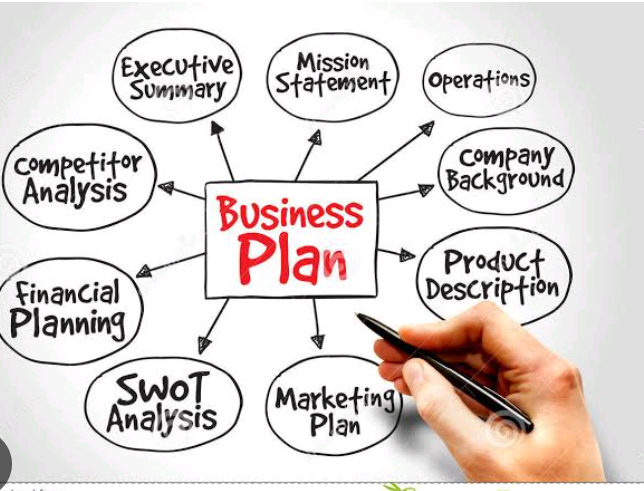Do you have a vision to become a business owner in the near future? Or – do you already have one? Then you need to create a successful business plan. A business plan outlines what your business is all about, and what you hope to achieve with it. This would help you to convince potential investors to support your business. With such a document, you can also prove how viable and profitable your business can become.


Your business plan is a pitch of your business to such an investor. It is your documented defense to prove to such an investor that he/she is deemed to get quick, sure returns from supporting your business. And as a small business owner or startup, you can create a successful business plan of your own. That is, with the help of free business templates.
To Create a Business Plan is a Demonstration of Foresight
As a business owner, you may not start out with a documented plan of your business. However, as your business progresses, your business plan should be created ahead of time – in anticipation of that much needed funding.
Furthermore, as your business begins to expand, that business plan should be re-designed and made more robust. Quality data and insights can be injected into your business plan with the help of experts in the subject area. Such experts should naturally be experienced in how to create a successful business plan.
Also, be prepared to pay for such professional help. The additional use of paid templates and software to get a winning pitch with your investors will be an advantage.
To create a successful business plan requires careful thinking and working out. And it may take some significant amount of time and data gathering. So it should never be rushed. It could be as simple as a single page at the onset. Or rather, several pages of well-researched facts carefully put together.
What Actually is a Business Plan?
A business plan is a clear statement or outline of the goals of your business, and how you intend to achieve them. It is a document that presents the products, services, structure, operations, and financing of your company to potential investors. This is in a bid to convince them to support you with their funds.
A successful business plan must be well written, if it must stand any chance before a potential investor. After all, no investor wants to lose his/her money to an unserious business owner. Again, you need to understand that several other startups and entrepreneurs present their cases before the same investors again and again. Your business pitch must be convincing enough, and be able to stand out from the crowd to get any attention.
Reasons/Purpose for Creating a Business Plan
- To identify the existing and potential challenges and needs your business might face. And prepare ahead to solve them.
- To make your business ideas very clear, and define the scope of your business. You can clearly plan out how much time, effort, and resources will be needed to start your business or make it successful.
- Helps you to do thorough findings or research about the existing and potential market.
- It prepares your business ahead to secure funds. Before any lender or angel investor will consider you, a convincing business plan must be in place. And that document must clearly reveal the structure and operations of your business. Your present and projected profits and expenses, and how the investor would profit from your business must be included.
- To qualify for competitions and grants.
- To bring the right manpower/talents on board. A successful business plan can help you to identify if you need specific staff or expert hands to join your team. It will also communicate the vision of your business to potential skilled workers to secure their confidence and support.
- To secure durable partnerships. Your business plan will clearly project the vision (and all other essentials of your business) to other entrepreneurs compatible with your business. It will help them to determine if they can successfully work with you and profit from the partnership in times to come.
Also Read- 5 Strategies for Boosting Employee Productivity
Types of Business Plan
There are basically three types of business plans:
1. The Traditional Business Plan
This is the standard format of a business plan – which can be very detailed, and cover several pages. Take it as the blueprint of the business. It covers everything from the business inception, its progress and challenges over time, and the projection of the business into the future. Our article will dwell on the traditional format, as we shall soon explain. The basic elements or sections of a traditional business plan must include the following:
- Executive summary
- Company description
- Products and services
- Market analysis
- Management Team
- Financial plan
- Marketing plan
- Operational plan
2. The Lean Canvas (or Simple Business Plan)
The simple business plan format was created by business model expert, Ash Maurya in 2010. It is a simplified form of the traditional business plan. It has 9 basic sections which include:
- The Problem
- The Solution
- Key Metrics
- Unique Proposition
- Unfair Advantage
- Channels
- Customer Targets
- Cost Structures
- Revenue Streams
3. The Non-Profit Business Plan
A non-profit business plan is a modification of a traditional business plan, created for an organization meant to offer a social or public service. A non-profit organization aims to perform a ‘public’ good (whether educational, health, religious, charity etc). And because they do not outrightly target making profits, they are excluded from paying taxes.
In addition to the basic sections of the traditional business plan, a non-profit plan includes a statement of what social good or impact the organization intends to achieve.
How to Create a Successful Business Plan: The Basic Outline/Steps
Executive Summary
The first and most important part of a business plan is the executive summary. It summarizes the key points of the entire business plan, and gives an overview of the company. A business plan is meant to attract and engage the readers’ attention, prompting them to delve further into the document and find out more. It may be referred to as a ‘Corporate Overview’. Though essentially one-page and brief, this introductory section is important enough to determine the success of the plan. So you are advised to develop the executive summary as the last stage, to effectively capture the important points in the business plan. Here you would need to state points such as the following:
- Business idea (What your business does)
- Business goals/vision
- Product description (and unique features/selling points)
- Target market (existing and potential customers)
- Marketing strategy (How to access your customers)
- Current revenue
- Projected revenue
- Requested financial aid (The amount needed)
- The team (The people working and driving the business)
Company Description
This section introduces the business to the reader. Here you are expected to present all the basic information about the company, such as:
- The Business name
- Year and location of its establishment
- Type of business entity (sole proprietorship, limited liability, public liability, partnership etc)
- The industry or professional field of operation
- A brief history of the business
- The vision, mission and objectives (long and short-term)
- The team members (and job roles in brief)
Products and Services
Describe the products and/or services offered by your business, particularly from the customers’ viewpoint. You must state at this point that you aim to solve an existing problem or need. And that need will remain relevant in the future. Also, are there products you propose to create in the future? That would also be useful.
Market Analysis
The next step is to determine who your target customers (or target market) will be. It needs to be backed with enough research showing how big the existing market is (an estimate of the number of existing customers). Such details may include:
- their age range,
- level of education,
- where they live,
- where they work,
- their earnings,
- their habits,
- their opinions,
and other details that influence their buying choices.
Also, how you intend to convey the product/service to the customers, and the rate/level of acceptance of your product is important. Again, an investigation of how your competitors perform, their observed strengths and weaknesses, and why you have an advantage over them will be important.
Business owners find it useful to perform what is called a SWOT analysis (Strengths, Weaknesses, Opportunities and Threats) of their business at this stage. SWOT refers to the identified advantages, disadvantages, possible growth/rewards, and limitations/regulations of that business.
The Management Team
Your team members are your employees, and people who co-run the business with you. Here you must present your organizational structure – the essential members of your management team and all key workers in your organization. You will be expected to outline their job roles and their experiences (a compressed resume for each person).
Financial Plan
This is a concise description of all your finances. It should show data projected to cover your expected finances for the next three to five years thereabout. Also, it sould state the history of your finances in the last few years (profits, losses, expenses, loans, etc). Such a financial plan would include:
- Income statement (revenue, expenses and profits on a monthly or quarterly basis)
- Break-even analysis (The point at which your business profits exceed all your expenses, including existing loans, is the break-even point)
- Cash flow projection (A forecast of how much money is expected to flow in and out of your business; it can help to predict the level of risk in your business)
Marketing Plan
You need to define strategies to attract and keep your customers, both now and in the future. That should include the proposed price, the product to sell, where to sell the product, and how to promote your product.
Operational Plan
At this stage, you need to state all the tangible (or physical) needs of your business. That includes stating the business location, your suppliers, inventory information and needs, required equipment, and facilities. Even the stages of processing (or production) until the finished goods reach the customers, need to be explained here.
Challenges of Writing a Successful Business Plan
What are the common problems or challenges one can face while writing a business plan? Depending on the type of business, these problems can vary. But you need to ask yourself if you have all the required details about your business to develop a detailed and successful business plan. Identify the key issues surrounding your business, then use them as material to develop your plan. Some of these key issues include:
- How specific and concise is your plan?
- Do you have clear and achievable goals?
- Do you know your target market well enough?
- Is your business idea attractive to investors? Is your business worth the risk or not?
- Have you made enough research to make meaningful financial projections, or even determine the cash flow (with good accuracy)?
- How appealing is your business plan to readers?
Successful Business Plans: Overcoming the Challenges
You can set about creating a winning business plan by first doing research into how business plans are created. It is equally good to learn from the experiences of other entrepreneurs who created, and successfully implemented their business plans. You can easily do so by getting involved in business forums and investment groups.
Again, hiring an expert who often deals with business plans will extremely benefit you in the long run. Rather than handle all the complex work by yourself. Paying a business consultant, lawyer, banker, or accountant to handle all the nitty-gritty of creating a business plan will be far more rewarding.








